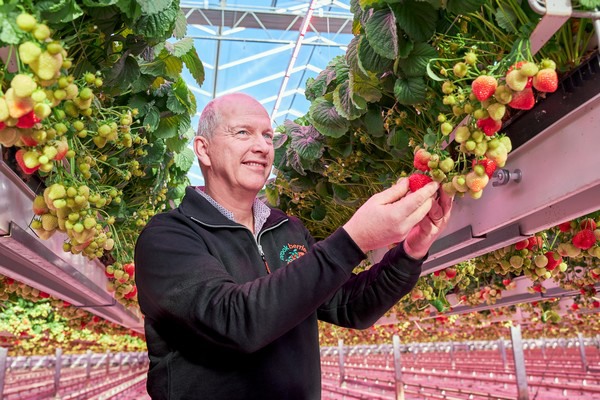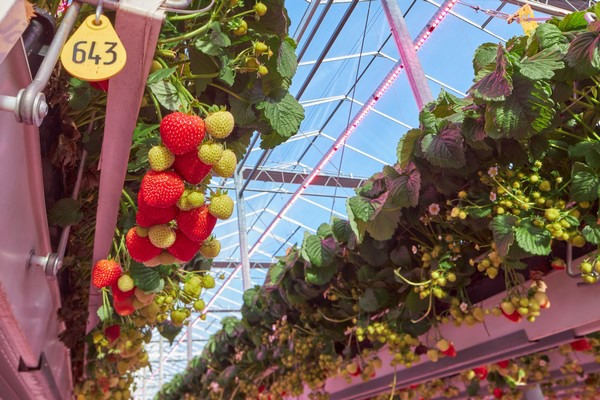Signify has worked together with Fragaria Innova to develop specific light recipes for strawberries, resulting in a steady production pattern with high yield, and good quality strawberries in wintertime. The joint research over the past year helps to further optimize the winter production of the so-called ‘June bearers’, a strawberry cultivar known for relatively short peaks in production.
Within Fragaria Innova, progressive strawberry growers commit themselves, together with external partners, to innovation surrounding the themes of growing under light and plant health. For growing under light, Fragaria Innova and Signify conduct a multi-year program with participating growers/propagators. At one of the production companies, a special compartment has also been equipped with separate climate control, this enables the testing of several growth and light strategies for multiple cultivars under full LED. One of the main goals of the research is realizing a (more) stable production pattern during wintertime.

Current winter productions usually take place with June bearers with a short production period of 8 to 10 weeks, after which a new planting in another section takes over production to create a stable, flat production. Unlit cultivation dominates before and after the winter production.
“Extra growth light is needed to realize sufficient yield and quality in winter”, according to plant specialist Peer Hermans, who conducts the research on behalf of Signify. “The trials have shown that you can influence the plant build-up somewhat with specific light recipes, for which LED is ideally suited.” By accurately tuning the light intensity and spectrum offered to the developmental stage of the plant, you can optimize the leaf surface and stretching of the flower trusses and leaf stalks. A better plant build-up can benefit the production. The idea is to raise the production quality through light optimization.

Grower Marcel Dings from Brookberries, co-initiator behind Fragaria Innova, noticed some influence on the plant build-up, but the extra assimilates that came with it, went mostly to the crop and less to the fruits. Dings: “Next season will focus on how we can further optimize the division of the assimilates in the plant, and how we can get the assimilates to the fruits”. The grower notices that there are a lot of variables at play, such as: cultivars, planting times, cultivation goals, light spectra, light intensity, and the balance between natural daylight and artificial lighting. “The benefit of this new generation of LED grow lights is that we can play with lighting efficiently, and that we can finetune the recipe to our own wishes and possibilities. Within this project, together we can achieve faster and more progress. I am satisfied with the results of this first year, but there is definitely room for further optimization. Hopefully, we can keep this going in the coming years.”
Grower Dave Linssen, participant within Fragaria Innova (cultivar: Malling Centenary), had a trial with different spectra at one company location, planted in August just like his unlit crop. “The lit plants went into production earlier in winter, as expected. When it came to kilos and plant build-up, we hardly noticed any difference between the light spectra”, he concludes. “We may need to tinker a little to get the ideal light recipe for our company. It seems obvious to me that growing under LED is a desired addition.”
Based on these encouraging results, the trial set-up for the coming season will be determined. Spectrum research and testing different cultivars will be part of this research.
 For more information:
For more information:Signify
